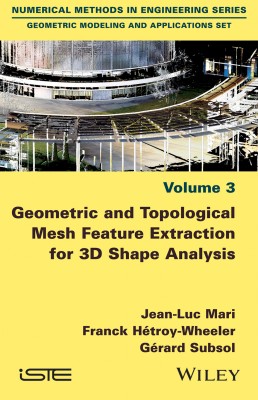
Three-dimensional surface meshes are the most common discrete representation of the exterior of a virtual shape. Extracting relevant geometric or topological features from them can simplify the way objects are looked at, help with their recognition, and facilitate description and categorization according to specific criteria.
This book adopts the point of view of discrete mathematics, the aim of which is to propose discrete counterparts to concepts mathematically defined in continuous terms. It explains how standard geometric and topological notions of surfaces can be calculated and computed on a 3D surface mesh, as well as their use for shape analysis. Several applications are also detailed, demonstrating that each of them requires specific adjustments to fit with generic approaches.
The book is intended not only for students, researchers and engineers in computer science and shape analysis, but also numerical geologists, anthropologists, biologists and other scientists looking for practical solutions to their shape analysis, understanding or recognition problems.
1. Geometric Features based on Curvatures.
2. Topological Features.
3. Applications.
Jean-Luc Mari is a Professor of Computer Science at Aix-Marseille University, France. His research interests relate to the extraction of information within meshes and other geometric representations. He is involved in various projects connected with planetary science, biology and computer-aided design and manufacturing.
Franck Hétroy-Wheeler is a Professor of Computer Science at the University of Strasbourg, France. Working within the framework of shape analysis and understanding, his research interests focus on the acquisition, reconstruction and processing of virtual 3D shapes.
Gérard Subsol is a CNRS researcher within the ICAR team at the Montpellier Laboratory of Informatics, Robotics and Microelectronics (LIRMM) in France. His work on mesh modeling has a variety of applications in anatomy, computer-aided design, environmental studies and paleoanthropology.